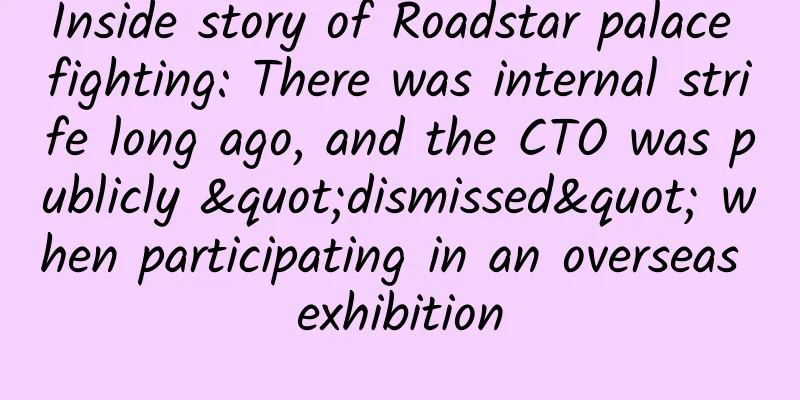Where did Gou Jian, who slept on firewood and tasted gall, live? The capital of Yue State has been discovered!

|
On November 15, the latest archaeological discoveries of the Jishan Middle School site in Shaoxing, Zhejiang were announced by the Shaoxing Cultural Relics and Archaeology Institute. In the southeast corner of the Jizhong site, a new building foundation of the Yue State was discovered. In addition, archaeologists have recently discovered bricks with inscriptions on the "Kuaiji County Wall", which provide new clues for confirming that the capital of Kuaiji County in the Eastern Han Dynasty was Shanyin County. Authoritative experts and scholars have determined that the greatest achievement of the Jizhong site is that it confirms that the capital of the Yue State was in the ancient city, and the archaeological site may be the site of the Yue State palace at that time. At the same time, it also proves that this place was the location of Shanyin County, the capital of Kuaiji County in the Eastern Han Dynasty. The scale of Yue State's architectural complex is huge Rows of square columns, rows of column bases, ash pits... The scale of the Yue State building foundation is huge. In the southeast corner of the excavation area of about 3,000 square meters at the Jizhong site, archaeologists have newly discovered the Yue State building foundation, with wooden columns and column bases distributed in groups, which can be inferred that there was once an extraordinary Yue State building here. Li Longbin, director of the Municipal Cultural Relics and Archaeology Institute, said at the archaeological site that since July this year, archaeologists have discovered six more Yue State floor pillars in the southeast corner of the excavation area of the Jizhong site, as well as many large wooden boards and pillars on them. In addition, they have discovered herringbone building sites similar to the Yinshan Yue State Royal Tomb and a large number of Yue State plain tiles and cloud-patterned tiles. Within the site, the 54-meter-long and 50-meter-wide area is dotted with Yue State building foundations, and they are arranged in rows from east to west and in columns from north to south, forming a network. Such a large-scale Yue State building complex with very sophisticated materials can only be matched by a high-level palace. Therefore, this may be the Yue State Royal Palace. Xin Lixiang, a researcher at the National Museum of China and president of the Chinese Qin and Han Dynasty Archaeology Society, said at an expert seminar held recently that the Jizhong site supplemented the deficiencies of historical documents through archaeological excavations, and clearly presented the capital buildings of the Yue Kingdom 2,400 to 2,500 years ago to people. The Jizhong site can be said to be the most important discovery in Wuyue archaeology, with great historical significance and great achievements. He said that the text clearly records that the capital of the Yue Kingdom in the late Spring and Autumn Period was in Shaoxing. This time, the site finally excavated is the site of the capital of the Yue Kingdom from the late Spring and Autumn Period to the Warring States Period. Wuyue culture has a great influence in southeastern China and is an important part of Chinese civilization. For Wuyue culture and Wuyue civilization, this is the most important discovery so far and a groundbreaking archaeological excavation. This was the location of Shanyin County, the seat of Kuaiji Prefecture in the Eastern Han Dynasty. The Jizhong site verifies the history of Goujian's capital as recorded in the literature, and is a major discovery in the archaeology of the capital of Yue. It is the first time that archaeologists have discovered a high-level official building from the Han Dynasty in Shaoxing, which is an important discovery in the archaeology of counties and prefectures from the Han Dynasty. Li Longbin said that in addition to the first discovery of the "Shanyin Cheng Yin" seal mud, the ink-written "disciple Kuaiji Zhang Long went to Shanyin and his name was Bolong" wood spike, and the "Law and Order" Han Dynasty pottery fragments, new discoveries of "Shanyin" Han Dynasty pottery fragments, "Kuaiji County Wall" inscribed bricks and other important cultural relics provided clues for confirming that Kuaiji County in the Eastern Han Dynasty was governed by Shanyin County. In addition, new discoveries of "two hundred catties handed over" tiles and "will immediately be under the service of the people" tiles were also made. The "Kuaiji County Wall" inscribed brick is 36.5 cm long, 18.6 cm wide, and 4.2-5.2 cm thick. Li Longbin put the two bricks together and said that from the "Kuaiji County Wall" inscribed brick, it can be seen that the regular script is used on it, which should be an official brick specially customized for Kuaiji County at that time. In particular, the excavation of the two important objects, the "Shanyin Cheng Yin" seal mud and the "Kuaiji County Wall" inscribed brick, combined with the large-scale Han Dynasty architectural relics, can confirm that this was once the location of Shanyin County, the governance of Kuaiji County. Dong Xinlin, a researcher at the Institute of Archaeology, Chinese Academy of Social Sciences and executive deputy director of the Archaeological Committee of the Song, Liao, Jin, Yuan, Ming and Qing Dynasties of the Chinese Archaeological Society, believes that the archaeological discovery of the Jizhong site is shocking and is a very important archaeological discovery. It has been confirmed that the site should be a capital of the Yue Kingdom, and it was also the location of Kuaiji County and Shanyin County in the Han Dynasty. After the Song Dynasty, it was a prefectural school. The inscribed bricks of "Kuaiji County Wall" have been unearthed. This site is rare and very important. Filling in many gaps in archaeology The building foundations of the Jizhong site are relatively well preserved. Overall, the time span of the site is relatively clear. The archaeological excavation materials, especially the uninterrupted development of important buildings, fully prove the historical evolution of the ancient city of Shaoxing. Archaeological excavations have revealed cultural layers from the Warring States Period, the Han and Six Dynasties, and the Tang and Song Dynasties. It has been confirmed that the site contains large wooden building foundations from the Han and Yue periods, and that Han Dynasty buildings are superimposed on Yue Dynasty buildings. Qian Guoxiang, a researcher at the Institute of Archaeology, Chinese Academy of Social Sciences, and director of the Architectural Archaeology Committee of the Chinese Archaeological Society, believes that such densely arranged buildings in a grid pattern are rare during the Warring States Period and can be regarded as the earliest example of signs of construction technology. At present, 21 ancient wells have been discovered in the Jizhong site, including one from the Warring States Period, which is a wooden wall structure and was discovered for the first time, about 2,530 years ago; 18 wells from the Han and Six Dynasties; and 2 modern wells, both of which are brick wall structures. More than 1,000 cultural relics of various periods have been unearthed, including high-level cultural relics such as bronze washbasins, bronze pots, and crystal rings. A large number of exquisite tiles from the Yue State, the Western Han Dynasty, and the Eastern Han Dynasty have been found in the site. Relics related to the metallurgical workshop, such as smelting iron blocks, iron pliers, bundles of iron spears, and groups of iron armor leaves, have been unearthed at the site. It is worth mentioning that when archaeologists were sorting out the iron armor leaves, they found two sets of armor with the words "made by Master Dakou" on the armor pieces. These two sets of armor are "privately customized" products. Many new archaeological discoveries have filled many gaps in Shaoxing archaeology. Li Longbin introduced that the ancient city of Shaoxing, which has a history of more than 2,500 years, has started to apply for the World Cultural Heritage. The archaeological excavation of the Jizhong site is a milestone for the historical and cultural city of Shaoxing. In the future, Shaoxing archaeology will use more, better and more practical new archaeological discoveries to enrich the cultural connotation of the ancient city of Shaoxing, do a good job in the archaeological exploration of the origin of Shaoxing regional civilization, and provide more evidence for the long history of Shaoxing. |
>>: In order to restore the ecology, they decided to play "music" outdoors
Recommend
Is it okay to let children wear clothes that cost only a dozen dollars?
It’s the season of changing seasons again. If you...
Meituan and Dianping merged, and the O2O melee escalated into the ultimate battle for the boss of BAT
[[151174]] On the 6th, an investor told me that h...
How do companies gain fans crazily on Douyin?
Tik Tok has a strong ability to bring goods, spre...
5 Examples of User Growth for SaaS Products
This compiled article mainly introduces the low-c...
New brain-like network is here! Chinese scientists build bridges between artificial intelligence and neuroscience
Author: Huang Yanhong, Huang Xianghong, Duan Yuec...
Musk: A new generation of flying Roadster sports car will be launched in 2020
Tesla CEO Elon Musk has made many surprising stat...
Google crawls 30 billion in-app information and recommends apps when searching for content
Google has just launched a new mobile search feat...
How to write a clear and organized promotion plan?
I have heard many of my friends and colleagues ta...
Scene language - the cornerstone of VR's long-term development
According to foreign media reports, Manick Bhan, ...
What is information flow promotion? What does information flow advertising do?
What is information flow marketing? For people ou...
Discussing activity operations from the perspective of user retention and activity
Today’s sharing will talk to you about event oper...
Electric Technology News: Known as the most unknown SUV in China, can the new Bisu T5 surpass the Haval H6 by a large margin?
With the relaxation of the two-child policy and t...
Advertising placement: Strategies to prevent over-delivery of performance advertising!
During the process of performance advertising , i...
Is Android about to be taken away?
[[129203]] When Cyanogen CEO Kirt McMaster announ...
The cleanest place on earth is dirty
From November 30 to December 2, 2019, in order to...









